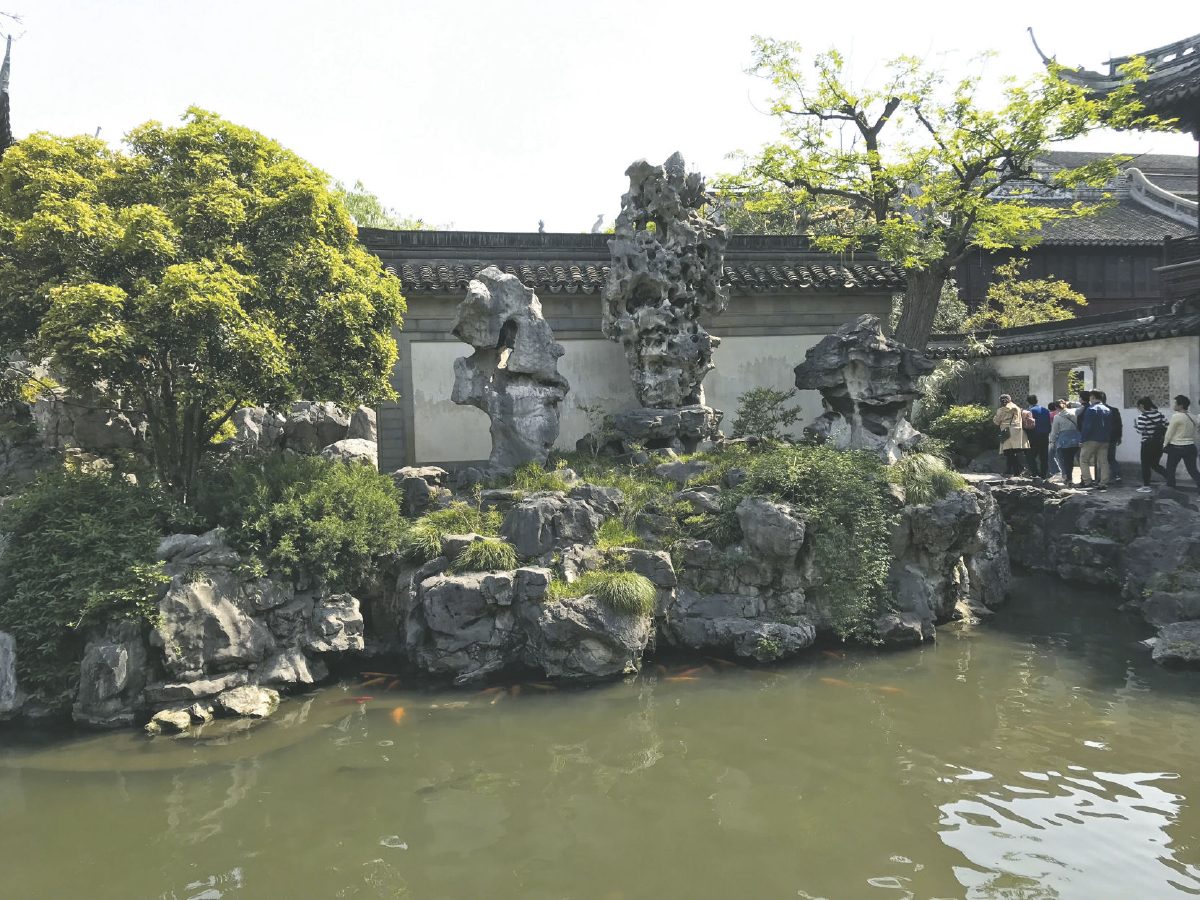BY Lori Murray , Texas Superstar Specialist
Two weeks after my disastrous visit to the Summer Palace garden we arrived at our last city. By then I had seen a tremendous amount of landscaping and visited two public parks and I sort of knew where I’d gone wrong, but it wasn’t until I got home and did some research that I realized just how the Chinese Garden has evolved in the last three thousand years. Despite my continued ignorance, however, I was much more ready to view the Yuyuan Garden that day in Shanghai than I had been earlier in Beijing.
The Yuyuan Garden is a famous classical garden with over 400 years of history.
Pan Yunduan a high government official in the Ming Dynasty (1368-1644) built it to give his parents a place to enjoy a happy and tranquil time in their old age. It became quite an extended project and he finally finished it in 1577, long after his parents’ deaths. (Kids!) As the Ming dynasty entered its latter years and the family declined, the garden became dilapidated.
In 1760, it was purchased by rich merchants who spent 20 years reconstructing the buildings but during the Opium War in the 19th century it was severely damaged. Finally, in 1956, a restoration project was begun. The small 5-acre Yuyuan Garden which today borders a huge public market right in the middle of Shanghai, was opened in 1961.
In a classical garden a pond of water is usually located at the center and the many structures, large and small, are arranged around the pond to show it from many different points of view. There are often lotus flowers or goldfish in the pond and a place for viewing them. Enormous, carefully placed rocks represent mountains. The most prized are limestone rocks that have been worn by erosion or sculpted into shapes. Their hardness contrasts with the softness of the water.
A classical garden also offers a display of architecture and plants. The plants are mostly in their natural state and rarely pruned or shaped.
The Yuyuan has a Great Rockery about 50 feet high with a hall at its feet and many other halls spread about its acreage. The halls are available for ceremonies and entertaining and offer views of different aspects of the garden.
A gigantic dragon slithers on the eaves of one of these – either the addition of a very brave original builder since only the emperor could use the dragon symbol of power, or an addition by a much later renovator.
There are pavilions, corridors, streams, courtyards, and many natural features with old trees and beautiful flowers that contrast with both the lines of the structures and the rough edges and immobility of the huge rocks.
It’s a place of quiet and peace, nestled within the ring of skyscrapers, adjacent to a bustling market and the financial dealing of Shanghai.











